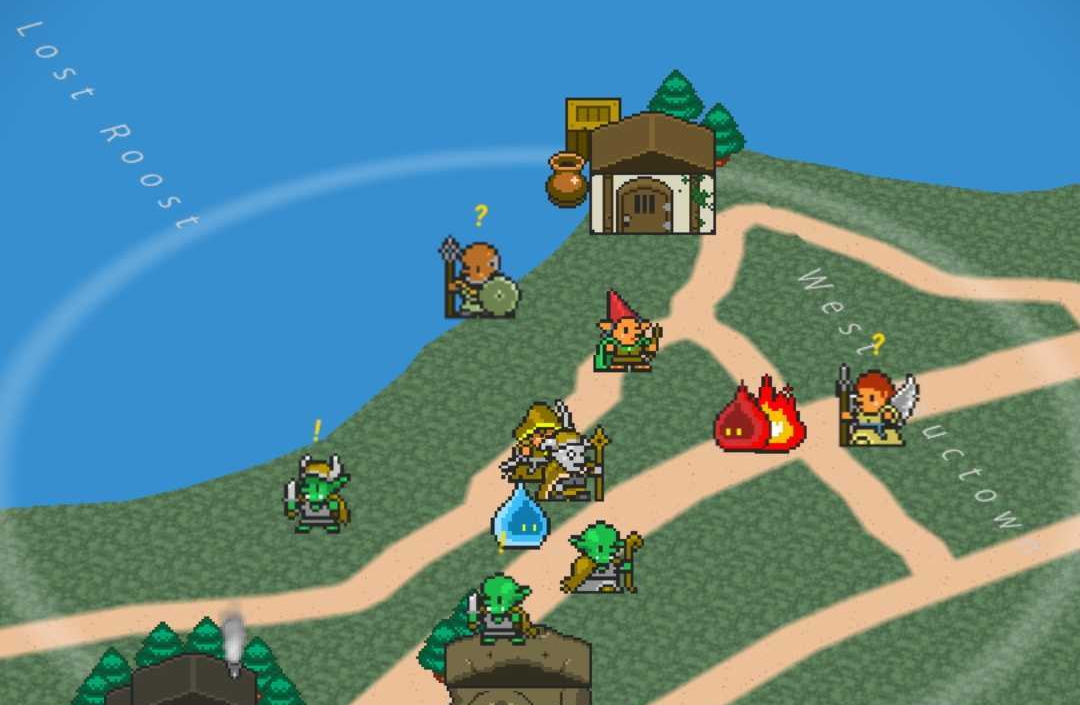
I was hoping to cover a couple of other location-based games besides Jurassic World Alive this month, but as I played them, there were a few issues that kept popping up, preventing me from really enjoying those games. I don’t really want to call them out since they’re from small dev teams, but at the same time, the big boys make these same errors quite often. In fact, while JWA has made some improvements in the past five years, they’re drowned out by some oppressive “features.” In fact, I’d wager the most famous location-based game gets by only on IP power.
So, for today’s Massively on the Go, let’s talk about just the top fives features location-based games keep using but shouldn’t.
Immersion-breaking ads
Devs, I know you need money. I get it. But as our commenters will tell you, immersion is a huge motivating factor when it comes to gaming. People are willing to pay full price for games from AAA companies almost as much as indies, but perhaps more relevant to mobile games, folks will pay for premium currencies, expansions/DLC, cosmetics, and storage. There are options.
But maybe those don’t pay all the bills. So maybe when you use ads, make them less intrusive and more relevant to your game. Ads in games, when correctly placed, are gaining traction, but I’d argue they’re not so much accepted as tolerated. For example, JWA has ads just about everywhere. While they’re not great or well-placed for the most part, simple things like being pushed to go to Walmart for a special spin-bonus isn’t terrible. Walmart seems like it would be in Jurassic World anyway, and while I avoid shopping there, if dinos attacked, I wouldn’t mind hopping into one and trying to find the axe aisle.
However, JWA also asks you to watch ads for bonus spins, bonus rewards, premium rewards, and promotions, and it’s gross. Advertising other games in full-screen mode in order to double your arena winnings or make death hurt less is intrusive and immersion-breaking (RIP Maguss). It’s not just immersion-breaking; it’s truly obnoxious and makes gameplay a slog, and it prevented me from continuing to play after I had enough for to write about for this column.
During an old GDC panel when I questioned the use of in-game ads vs. advertising for promos, Vungle Senior VP Scott Silverman told me, “Ad placements are typically to drive incremental revenue on top of IAPs [In-App Purchases] VS promotions/events often being intended to lead a user to a new action. The goal of promotional item/event is increased engagement where as ad placements the main goal is monetization, with hopefully positive engagement as well.” Basically, ads are just there to make money and not add to the game.
That’s bad. It’s literally killing the quality of our games. But it doesn’t have to be this way. Other series, such as Earthbound and Pikmin, are based on the real world and therefore are perfectly primed to include ads in non-intrusive ways. Of course those worlds would have billboards and ads somewhere in the world. Maybe you use the products as equipment or combat. Heck, maybe they’re just running on a TV. There are options.
And if your game doesn’t take place in a world that would have those, maybe stick to advertising only games people in your world might play. If there’s no gaming, maybe partner with brands that could be NPCs. I’m sure Sir “Slim” Jim could sell players various jerkies and mention new products with discreet links in his text.
And you don’t have to follow the formula other games have been using for decades! Location-based games are a relatively new genre and should take advantage of that. Spin ads in-game are easy enough. If a company wants something bigger, QR codes for bonuses inside shops could help. To push purchases, promo codes on the bottom of receipts could help too.
None of this is new, especially for those of us who grew up when Gamestop wasn’t struggling to survive, but they’re all things that can be recycled by a new genre. Simply make the code input tied to the virtual location to ensure people can’t simply post a US code so their buddy in Australia can use it. There! You took something old and made it new and relevant to both the game’s function and purpose. Now that’s much more interesting than some ad and should have more visible impact.
Over-monetization
RIP Maguss and The Walking Dead: Our World (though somehow yet Jurassic World Alive even though it’s constantly assaulting me with ways to spend money). Again, I get it. You need money. And not all payment systems work for every player. But dang, devs, do we really need ads, selling player data, in-app purchases, premium currencies, event tickets, subscriptions, and gamble mechanics all in one game at the same time?
Look no further than Nintendo to see that you can choose one or two main earning options and do well. Nintendo has experimented with a lot of models in the mobile sphere, and as we’ve mentioned, its worst offender used basically everything and still performed worse than a pure gacha game, in addition to landing the company in some hot water. Even though the results aren’t what I’d like, I still applaud Nintendo for constantly experimenting, and devs should also take a good long look at how those different monetization strategies panned out for big IPs.
Having too many places to spend your money not only feels overwhelming but cheapens the product’s perceived value. If you have to constantly ask me for money, I begin to suspect your game won’t last. So many location-based games have launched and died, and there have been plenty we didn’t even cover on this site because they were just that bad as a concept (like a “laser tag” MMOARG played with your phone acting as the gun). If your monetization reveals how close your game is to going belly-up, players won’t support you.
For that reason, when you need to figure out which kinds of monetization to use for your game, choose just a few. Obviously in-app ads are getting more popular, so fine, keep that. Premium currencies and in-app purchases are obvious too. But from there, can you maybe choose subscriptions or event tickets to keep the lights on? If you need a way for whales to spend big bucks, maybe choose between gambling or having, say, paid housing with premium decorations? If people are willing to buy $40 skins in Pokemon Unite so the game can be less pay-to-win, surely other games can put out high-priced fluff as well. Yes, you’ll probably get called out, but as long as it doesn’t affect gameplay, you can probably get away with it long enough for you to possibly lower the price to something comfortable before bumbling into your very own monoclegate.
Randomized quest/reward locations
RIP Witcher: Monster Slayer, as you launched with this mistake. It’s not the only one, though. Orna’s memory hunts can be a bit similar, though the areas are quite large and you do get a few options once you activate the hunt. Similarly, JWA not only populates poor areas at random but will try to get you to move closer to improve rewards. It’s nice to have some options for rural players without lots of “famous” landmarks, and it’s nice that I don’t need to go down into the trail-less ravine where I’m sure countless snakes, raccoons, and coyotes make their homes. But dang, it is weird and creepy when a game incentivizes “exploring” obviously unsafe areas.
A nice alternative – in Orna – is letting players build in the gameworld and choose whether they want their creations shared. It’s not like certain other games where you can simply “lure” players into a dark alley with no effort, and it allows people to maintain their privacy or close shop if people abuse their generosity.
Constant distractions while walking in the real world
This one is a truly slippery slope. On the one hand, one of the Pokemon Go’s strongest advantages is the curveball motion, which often reveals to nearby people familiar with the game that someone is playing that game. No other location-based game that I’ve played has a similar tell-tale sign, so without creepily looking at strangers’ screens and approaching them to reveal said creepiness, it’s impossible to find your fellow players in meatspace.
But on the other hand, I am the unofficial watcher-of-the-group among my friends, doing my best to help avoid curbs, low-hanging branches, oncoming traffic, and other humans not watching where they are walking.
Similarly offensive is the fact that asking players to do too much requires them to stop moving at times. While I was playing in population-dense Japan recently and able to do raids sometimes as I waited for trains, I honestly had little to no time to really actively play. As I was the only one who could speak and read any of the local language (and not well), I had to constantly look at where I was going and make/change plans depending on the situation. Travel is supposed to be more exciting for GPS-based games, as it’s often akin to entering a new zone in traditional MMOs, but if you have to watch the screen too much, say for Rocket Battles or Daily Incense spawns, that gameplay aspect gets ignored.
This is also with a game that has paraphernalia to allow some passive gameplay. Very few GPS games do this. Again, while passive gameplay helps ensure that the player can get some time in safely by doing meatspace activities, it also prevents them playing the game in a manner that reveals to other players that they too are a community member.
Territory control
I’m not going to beat a dead horse. We’ve been over this a lot. Turf wars have no place in location-based games, especially if devs refuse to put in emergency contact buttons to deal with violence and/or stalking initiated over a game.
Even worse is trying to make your game specifically about that. Father.io was clearly a mistake from the start, as running around aiming your phone at people in public places to virtually kill them is way out there for regular gamers. Any AR/location-based-game dev should know by now that you cannot have your game making people feel uncomfortable in meatspace, both as a player or a non-player, without risking your reputation (or lawsuits).
It’s easy enough to say what not to do, especially in hindsight, but I think there are also some features that clearly work. Location-based games have used certain features, especially ones based on MMOs, that have been quite successful. The only “problem” is that we don’t see many that make use of them while also avoiding these major pitfalls, so next time, we’ll be talking about five features location-based games need to use more.
 Massively OP’s Andrew Ross is an admitted Pokemon geek and expert ARG-watcher. Nobody knows Niantic and Nintendo like he does! His Massively on the Go column covers Pokemon Go as well as other mobile MMOs and augmented reality titles!
Massively OP’s Andrew Ross is an admitted Pokemon geek and expert ARG-watcher. Nobody knows Niantic and Nintendo like he does! His Massively on the Go column covers Pokemon Go as well as other mobile MMOs and augmented reality titles!

















